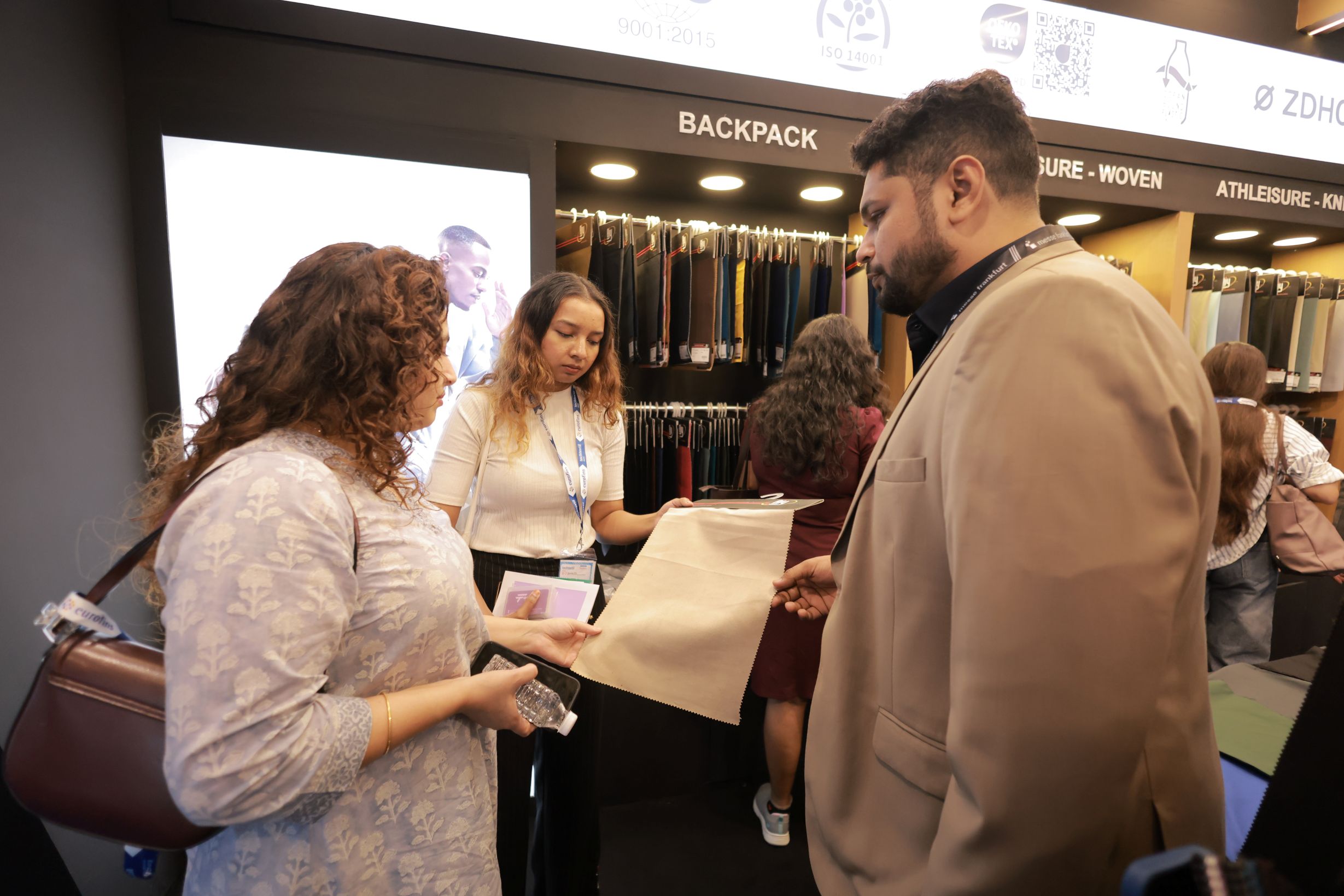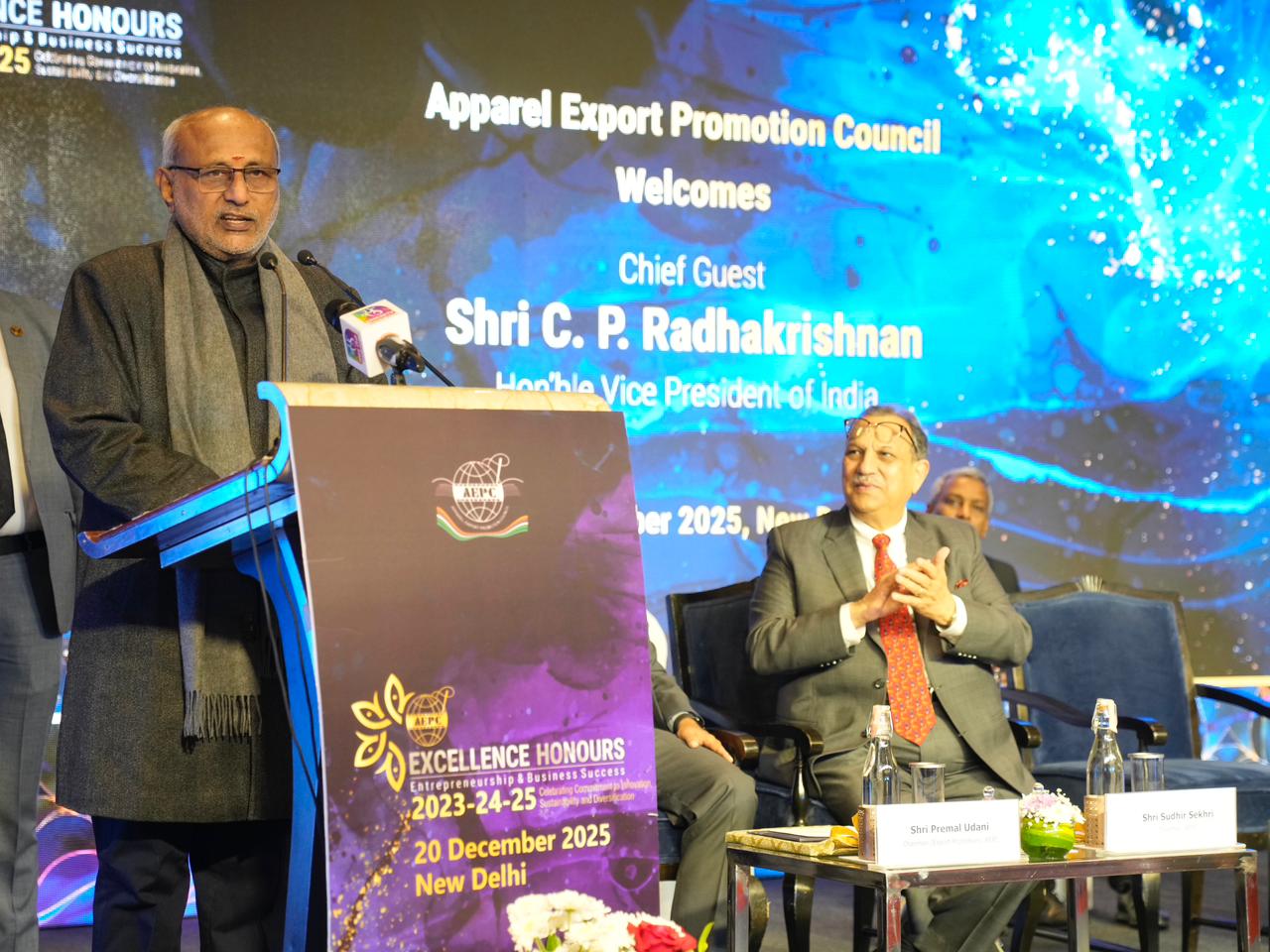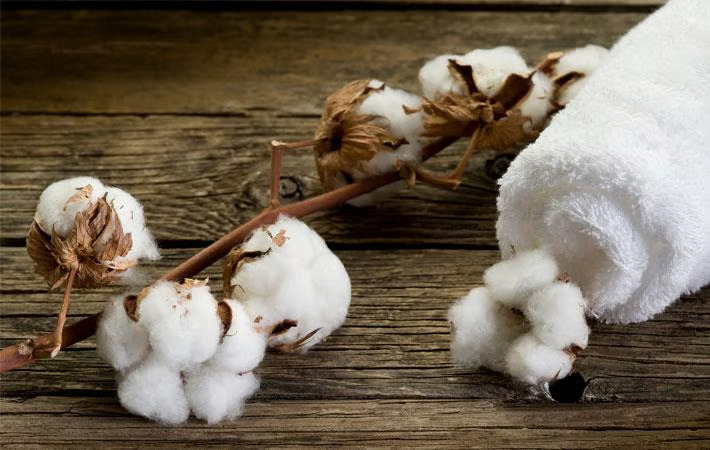FW
The government plans to encourage companies to produce geo and technical textiles through the textile technology mission scheme. The aim is to promote its ‘Make in India’ initiative by way of enhancing capital subsidies to procure textiles machineries which are largely imported.
It is likely to make use of geo and technical textiles mandatory in sectors such as construction of roads, ports, airports, canals, dams as also in defence and railways to propagate their applications and to restrict such imports to enhance domestic production, points out Textile Commissioner, Kiran Soni Gupta, while speaking at a seminar on 'Geo Textiles' under aegis of PHD Chamber of Commerce and Industry.
Soni informs capital subsidies for obtaining textiles machineries could also be increased along with the interest subsidy expansion since states like Rajasthan, Maharashtra and Tamil Nadu make a significant contribution on the geo and technical textile manufacturing front. PHD Chamber plans to open a ‘Startups Cell’ to support, fund and guide the young entrepreneurs in the field of their choice including technical and geo textiles segments.
www.phdcci.in
Indian bed and towel major Welspun has bagged the license to supply towels to the teams vying for the coveted 2015 Rugby World Cup that started on September 18, 2015 in the UK. This is not the first time that Welspun's towels made at its manufacturing capacities in Gujarat are making their presence at a global sporting event. In 2006, the company held license to manufacture towels for the Wimbledon tennis tournament.
The company has emerged strong in manufacturing textiles—towels and bed sheets. Around 95 per cent of Welspun’s revenue is driven by exports to global retailers in the US such as Walmart Stores and JCPenney.
Companies like Welspun are also investing in research and development (R&D) to innovate and grow their business. The company has applied for six patents in Europe, the US, Brazil, China, Korea and Australia for its creations such as natural finish fabric, ergonomics mattress pad and eco-dry towels that use little water during washing. It has already got patents for Hygrocotton that has a hollow core for fluffiness, temperature control and moisture wicking, from the UK and the US in the past two years.
www.welspunindia.com
One of America’s top sportswear companies is taking note of Dallas textile company Nextt’s new cotton and polyester blend fabric. The marketing arm of Mumbai-based Alok Industries, Dallas based Nextt, has received patent for yarn and fabric production for blended cloth between 300 and 1,000 thread count. Yarn and fabric made of at least 51 per cent cotton is covered by the patent.
Nextt has created Alpha Cotton using the patented yarn and fabric which it uses to make bed sheets. Arun Agarwal, Nextt’s CEO, who founded it in 2008, has applied for global patents. Speaking about the idea for textile, he said that it came to him when he saw cotton prices rising. He thought that since ‘necessity is the mother of invention’, he decided to blend polyester and cotton, which according to him creates a luxury, high thread count linen at an affordable price. Agarwal added that most of the cotton, which is under the patent will be 55 per cent and 45 per cent polyester.
He said that Alpha Cotton is also easily washable, it dries faster and does not collect as much bacteria as traditional sheet fabrics. Nextt sells 600 thread count sheets on average between $59.99 and $69.99 per set. Several retailers such as Bloomingdale’s, Kohl’s, Belk and even Walmart stock these products.
Alpha Cotton, though, will not be the only fabric for sheets and Agarwal said that one of the top athletic apparel manufacturers in the US has approached him to use the fabric in sportswear. Sales of Alpha Cotton are expected to reach $2 billion in the next two years based on Nextt’s current revenues of $500 million.
Asia's leading, one-stop fashion sourcing show covering accessories, apparel and fabrics will be held from October 27 to 30, 2015 in Hong Kong. Three co-located events that will take place include Fashion Accessories & Footwear, Fashion Apparel & Fabrics and Underwear & Swimwear. The shows will exhibit a wide selection of products, while highlighting the latest styles and trends.
New featured introduced this October is the ‘Young Designers Corner’ to showcase designs with fashion parades by emerging and talented designers from Korea and top fashion schools in Hong Kong. The ‘Fashion Technology Corner’ will demonstrate the latest trends in fashion technology such as 3D printing application in apparel and footwear, while the ‘ASEAN Select Showcase’ will feature apparel from emerging garment hubs, including Myanmar and Vietnam.
The shows are expected to witness visitors from many of the world's leading brands and retailers including Audiovox, BenQ, Burberry, Carrefour, Cisco, FILA, Foxconn, Fujitsu, Hallmark Cards, Huawei, H&M, Intel, Lenovo, LG Electronics, Li & Fung, Marks & Spencer, Microsoft, Panasonic, Philips, RadioShack, Samsonite, Samsung, Sobond, Sony, Target, TCL, Triumph, Woolworths and Walt Disney.
The Gifts & Home show under the same banner will take place from October 18 to 21, 2015 and will be held concurrently with Mobile Electronics show, providing expanded sourcing options for visiting buyers. The show is set to feature quality suppliers of innovative and creative products including smart home devices, smart gifts, sports and outdoor products, kitchenware and dinnerware.
The new production technique, cellulose dissolution developed by VTT Technical Research Centre, Finland, the largest multidisciplinary research organisation in Northern Europe, is a part of a project launched by a group of Finnish organisations. This technique will be tried out at all stages of the value chain during 2015 and 2016. Old worn-out cotton clothing can be turned into new fibres for the textile industry by using this technique. Cellulose wet-spinning is due to begin at VTT's pop-up plant in Finland in October. Towards the end of 2016, the first clothing line made of the new recycled fibres will be out.
Both consumers and businesses are challenged by advancements in recycling technology are challenging both consumers and businesses. As of 2016, organic waste in the form of clothing may no longer be disposed off at landfills. Piloting and modelling a closed-loop ecosystem in line with the principles of circular economy, is the aim of the Circular Economy of Textiles (TEKI) project. This will form the basis of a new way to make industrial use of textile waste that cannot be reused.
For the TEKI project, VTT and Ethica have brought together a group Finnish organisations from different activities in the value chain. The organisations collectively aim at to promote the recycling of textiles while adding value to their business activities or creating new business. Ethica's role in the project is to research and model the potential of a closed-loop textile ecosystem more comprehensively. It also aims to gauge consumers’ interest in operating models that are based on the principles of circular economy and recycled materials. Besides, the aim of the project is also to study the technological requirements of dissolution-based recycling.
Bangladesh is toying with the idea of setting up garment villages in Chittagong. Another plan is to build a six-lane expressway between Dhaka and Chittagong. Offers have come from some countries to build that on the build, operate and transfer model. It’s hoped that once this is done a good number of satellite cities will grow up around the expressway. Chittagong is the principal seaport of Bangladesh. It handles about 92 percent of the import-export trade of the country.
However, problems need to be looked into. At one time Chittagong-based garment entrepreneurs' contribution to the national economy was 40 per cent. It has come down to 11 per cent now. Port efficiency is another major obstacle. Urban chaos is intensifying through disjointed infrastructure initiatives unlinked to needs on the ground. Another problem facing the port city is gas shortage that has plagued it for 15 years.
The bright spot is that the port has been able to show a marked improvement in handling containers and optimising the utilisation of berths and yards. Bangladesh has a target of reaching $50 billion in readymade garment exports by 2021. For this the country needs to achieve an annual growth rate of eight per cent.
Kashmir sericulture, or silkworm farming, is a casualty of changing regulations, regional political tensions and competition from China. Only about 30 per cent of the silkworm cocoons produced in Kashmir have been used locally to produce silk. The rest is exported to other regions in India and neighboring countries, which convert cocoons into silk more cheaply and efficiently.
Kashmiri silk factories have to find a way to produce as cheaply and efficiently as their East Asian competitors. Competition has meant that many Kashmiri silk producers have abandoned the industry as the price they receive for silk products has declined dramatically. The Kashmir silk industry once held a significant position in the world due to its superior quality and luster. Shortage of mulberry trees for rearing the cocoons is a pressing problem.
Since the 1980s, production has decreased dramatically. By the late 1990s the state was producing only 60,000 kg of cocoons per year. Rates have come down sharply from Rs 1500 per kilogram last year. The rates have touched Rs 500 to Rs 600 per kilogram. Previously prices were kept artificially high in an attempt to grow the silk industry. India is the second largest producer and consumer of silk products in the world.
Milan, Italy will host the PCI Fibres Conference 2015 from November 10-11 at Hotel Marriott, Milan, Italy. Aspects such as prospects for raw materials, fibres and textiles in the context of sustainability challenges, global health issues, and lifestyle and demographic changes will be discussed at the conference. These aspects have implications for the mix of fibres, the manufacturing locations of supply chains, and the production systems that are used.
Presentations will define the quantitative response in terms of fibre demand numerics. They will also touch up on the crucial issue of how to recover value, which is maybe, the most pressing requirement throughout the industry.
There has been unpredictability and chaos since the last two-three years in global fibres and textile supply chains. Supply chains and trade patterns have been reconfigured due to heavy investment in China and volatility in exchange rates in this time period, and overcapacity at all levels has become a major threat to the financial stability of large parts of the industry. Also, raw material prices have gone up dramatically and crashed.
PCI Fibres is a specialist consultancy in fibres and textiles and they are optimistic about rebalance and recovery in the market this year. As per reports, waiting for supply/demand balances to restore the situation will slowly help with the recovery. Directly addressing some of the complex challenges that global consumers present the industry with at every level of activity can help speed up recovery.
ICE Futures US will launch a world cotton contract on November 2, 2015. The contract will price delivery of multiple origins and allow delivery in multiple locations around the world.
Contract rules provide for delivery of cotton from the US, Australia, Brazil, India, Benin, Burkina Faso, Cameroon, Ivory Coast and Mali, with the US as par and a pre-set premium or discount for each other. The rules provide for delivery in exchange-licensed warehouses at specified delivery points in Malaysia, Taiwan, Australia and the US, with the Malaysia and Taiwan locations at par and with pre-set discounts for delivery in Australia and the US.
Intercontinental Exchange is the leading global network of exchanges and clearing houses. Its futures exchanges and clearing houses serve global commodity and financial markets, providing risk management and capital efficiency. The New York stock exchange is the world leader in capital raising and equities trading.
ICE Futures US is the center of global trading in soft commodities with futures and options on soft commodities including coffee, cocoa, sugar, cotton and frozen concentrated orange juice. ICE Futures Europe lists London soft markets, including London cocoa, Robusta coffee and white sugar, providing a full range of global soft commodity products on the ICE platform.
Myanmar may lower tariffs on imports of fabrics from Taiwan. Importers of Taiwanese fabrics in Myanmar are currently required to pay 5 to 15 per cent import duties. Lowering of tariffs by Myanmar is seen primarily as a goodwill gesture. Fabrics are one of Taiwan’s few key export items to Myanmar, accounting for 14 per cent of Taiwan’s outbound sales to Myanmar.
Taiwan is thinking of exporting agricultural equipment and modified vegetable seeds and rice seeds to Myanmar in future. The two countries have agreed to work together on commodity inspection technology to lower trading costs. Taiwan will help Myanmar set up a system to speed up the goods clearance process at customs.
Taiwan is planning on bringing in migrant workers from Myanmar to resolve labor shortages in that Taiwan’s manufacturing and agricultural sectors. People in Myanmar share similar religious beliefs and lifestyles with people in Taiwan, making them a good fit in the local economy.
Myanmar has recently opened up its market for imports of goods including textiles from all over the world. The main countries Myanmar imports man-made fiber textiles from are China, Republic of Korea, Japan, Taipei, Indonesia, Thailand.












